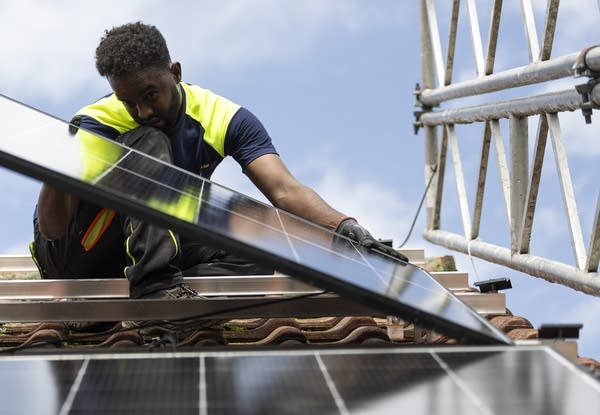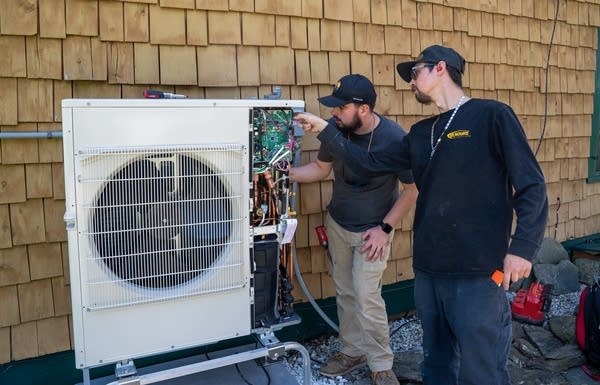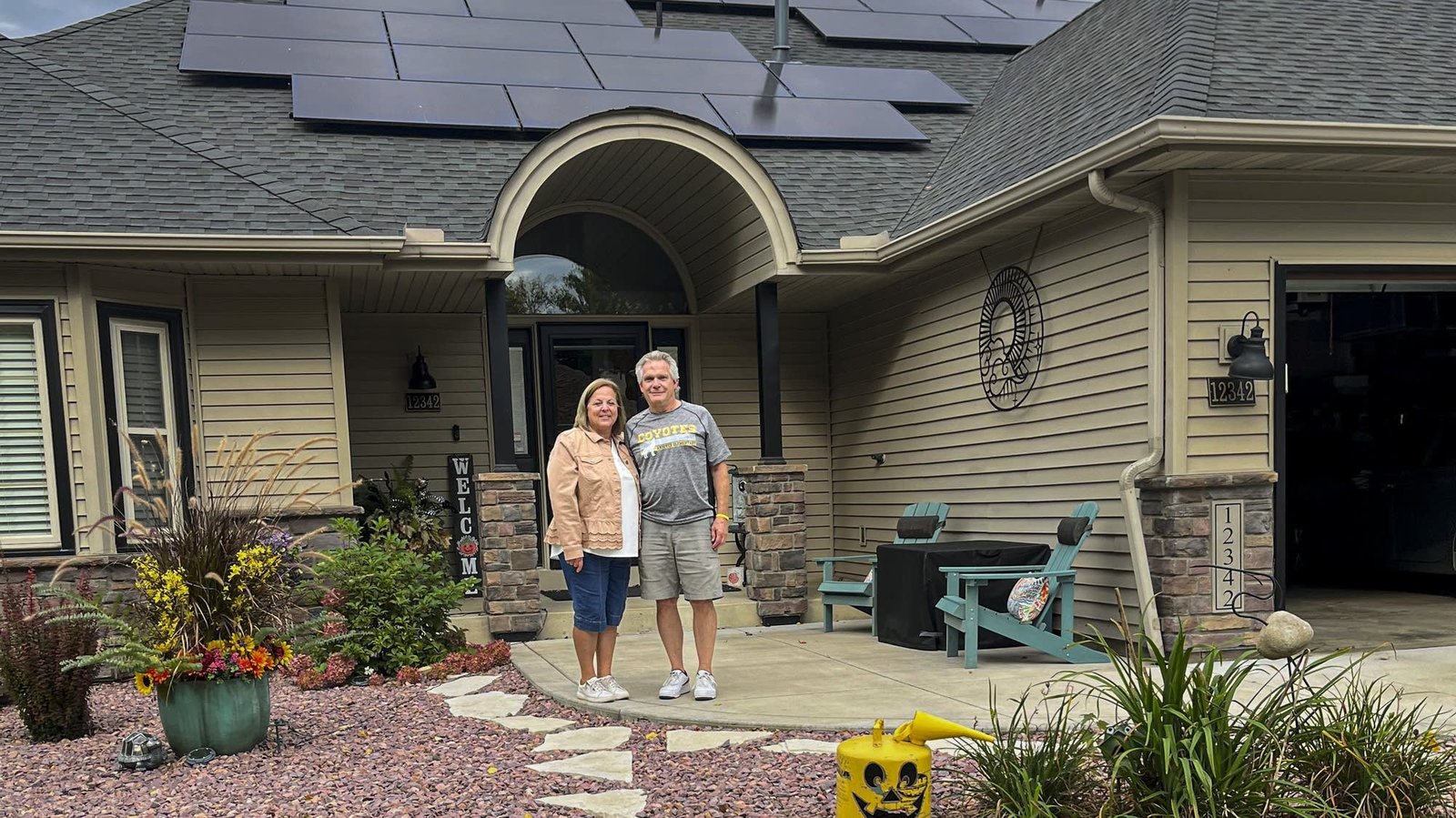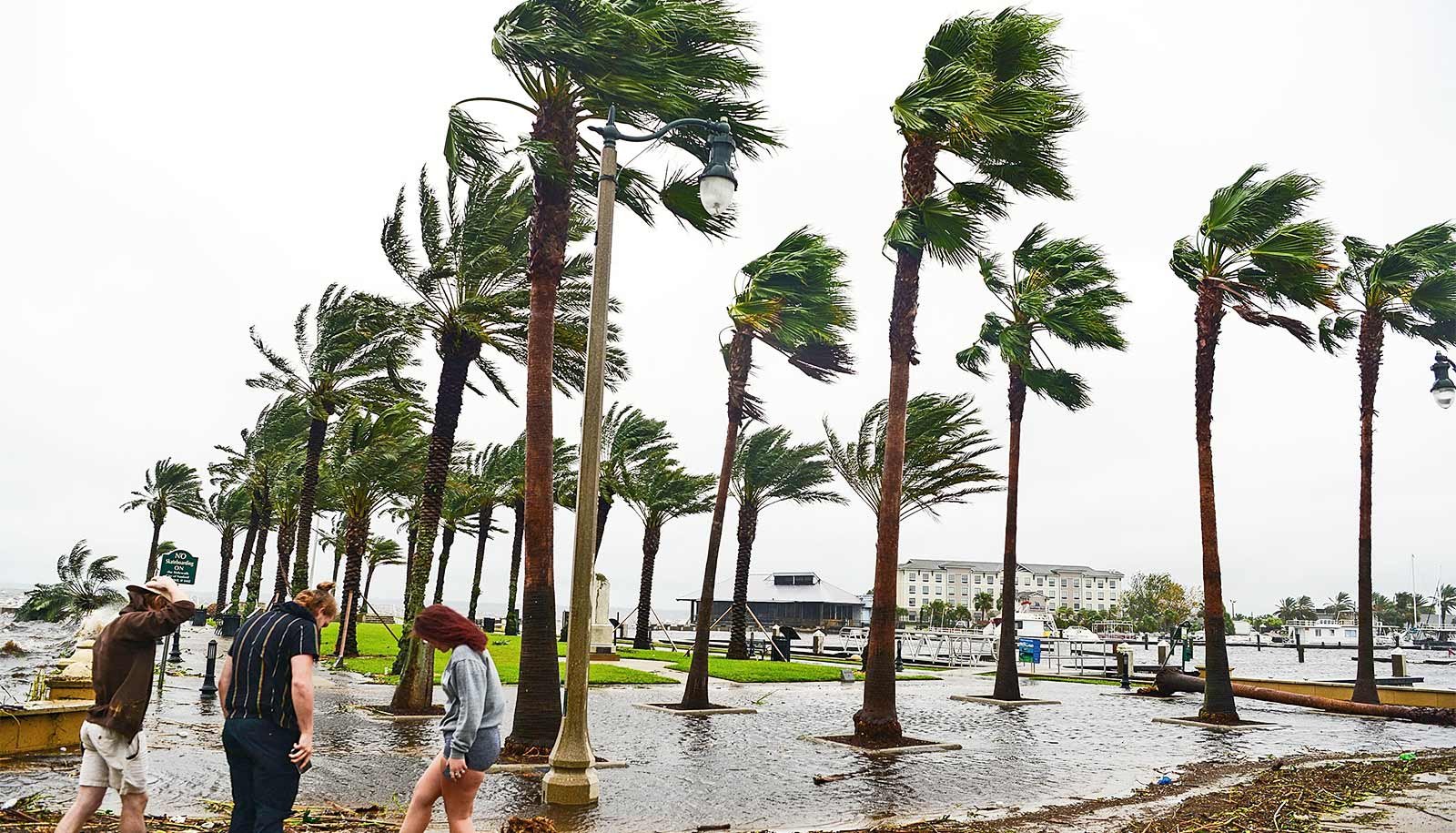Craig Larsen and his wife Ann had been thinking for years about putting solar panels on their Maple Grove house, both to save money on their electric bills and to do their part to help address climate change.
Last year, they took the leap and hired an installer. Since February, their rooftop solar panels have been producing more electricity than the Larsens use, generating a large credit with their utility, Xcel Energy.
The solar array should pay for itself in energy savings in 10 years. Larsen said a big incentive to move ahead with the $35,000 project was a federal tax credit that covered 30 percent of the cost.
"That was a big factor,” he said. “I can't say that we would have done it without that tax credit."
But that benefit is ending on Dec. 31. President Donald Trump's tax and spending bill passed this summer did away with several clean energy incentives designed to encourage homeowners to make their homes more energy efficient or switch to energy sources that don’t generate greenhouse gases.
That includes tax credits that have helped lower the cost of installing solar panels, batteries that store electricity and heat pumps, or of making homes more energy efficient with better windows or insulation.
“My advice to folks would be to hurry up if you can and take advantage of these federal tax credits while they still exist,” said Joel Haskard, co-director of the Clean Energy Resource Teams, a public-private partnership that connects people and communities to resources for clean energy projects.

In fact, it's likely too late for homeowners to get a residential solar project completed and running by Dec. 31 if they haven’t started the process. Many solar installers are booked through the end of the year.
All Energy Solar based in St. Paul has seen demand for solar projects increase about 250 percent since the beginning of July, said Michael Allen, co-founder and CEO.
“I would say everybody in the solar industry is very busy,” Allen said.
His company is already scheduling projects into 2026. Allen said it’s a sign that even without the federal incentives, some people still want to hedge against rising energy costs.
"If the cost of electricity continues to rise at a pretty significant rate on an annual basis, solar continues to look better and better and better,” he said.
Some homeowners are going ahead with clean energy improvements even if they're more expensive up front. They may be motivated by other reasons, such as having predictable electric bills, being energy independent or reducing their carbon footprint.
Anne Pelc began looking into solar soon after she and her husband moved from Iowa to Lakeville last May. She said she wanted to do her part to address climate change.
"If I can do my little piece, then that can make a difference,” Pelc said.
The Pelcs’ project won't be installed until next year. They’re going ahead, even without the federal tax credits.
Pelc said her house doesn't get the ideal amount of sun exposure, but it will be enough to meet her household’s energy needs.
"We can basically replace about 100 percent or a little more of our electricity use,” she said. “It may not be making us money. But it will offset what we're currently using."

TruNorth Solar of Arden Hills is installing the Pelcs’ solar array. President and CEO Martin Morud said the federal tax credits have definitely helped generate more interest in solar. But even without the credits, he thinks solar will still be appealing.
"The controlling factor is really the cost of electricity and how fast it's going up each year,” Morud said. “That's the biggest incentive right now.”
People who can afford solar will continue to install it, but the loss of federal tax credits will affect people with less expendable income, said Logan O’Grady, executive director of the Minnesota Solar Energy Industries Association, a trade group.
“We will see a reduction in middle-class families going solar,” O’Grady said. “We want to make sure that people know it’s still possible. Don’t give up hope. But it just might change the terms of your financing.”
Experts say homeowners thinking about making their home more energy efficient and green still have options. A good first step is a home energy audit to identify ways to save energy.
Clean Energy Resource Teams offers an online tool to help people, businesses, nonprofits and local governments find available funding for clean energy projects.
Many utilities offer their own rebates or cost-saving programs. The state of Minnesota also is rolling out incentives for heat pumps, electrical panel upgrades and other projects, Haskard said.
“There are things that you can do to lower your energy bills, and that's going to be true whether or not these federal incentives are here or not,” Haskard said.




